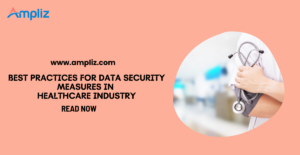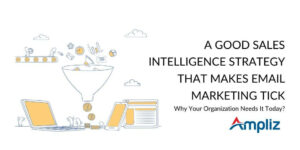
Since healthcare is a data-driven industry, implementing business intelligence makes deducing helpful insights from raw, unstructured data easier. The insights business intelligence tools provide can help healthcare facilities make smart decisions and ensure better patient service. Statistics indicate that the United States healthcare business intelligence market was valued at $2.63 billion in 2022 and is expected to hit $8.36 billion by 2032. Discussed below is the role of business intelligence in the healthcare industry.
1. Fast and better decision-making
Decisions in healthcare should be driven by up-to-date, rich data that provides clear information to a facility’s management. BI provides data insights that healthcare management can then use that data to make informed clinical decisions. Business intelligence helps transform healthcare decision-making in the following ways:
- Smart clinical decision-making: Business intelligence can benefit clinicians and physicians by providing proof-based insights that promote clinical decision-making. Healthcare professionals can analyze past patient data, best practices, and treatment outcomes so they can establish customized treatment plans, enhance patient safety, and maximize care pathways
- Improved data accessibility and visibility: Healthcare business intelligence tools, such as the Medimobile Medical Analytics and Reporting Software, provide real-time reports and dashboards that allow an in-depth view of resource utilization, patient outcomes, financial performance, plus other essential metrics. This empowers decision-makers to spot improvement opportunities and trends
- Better financial performance: BI in healthcare equips economic decision-makers with insights into cost analyses, billing processes, and revenue cycles. With this knowledge, they can optimize revenue streams, minimize operational inefficiencies, and attain financial sustainability for their healthcare facilities
- Predictive analytics for preventive healthcare: Healthcare BI simplifies predictive analytics, promoting early identification of possible health threats and proactive intervention. Analyzing patient information and risk elements enables healthcare providers to recognize high-risk patients and apply preventive measures, lowering hospital readmissions and bettering population health
- Efficient resource allocation: With the help of healthcare business intelligence, healthcare facilities can optimize resource allocation. By analyzing information on patient demographics, service demand, and treatment costs, administrators can allocate equipment, staff, and other resources effectively to ensure patient needs are effectively met
2. Improves patient care and satisfaction
It’s every healthcare facility’s responsibility to ensure effective patient diagnosis and treatment. Implementing the insights business intelligence tools generate can help healthcare businesses enhance patient care and satisfaction in the following ways:
2.1 Boosting patient safety
Patient safety is a significant KPI that your healthcare organization must track. With the help of business intelligence technology, you can monitor and resolve safety concerns. For instance, BI tools can track historical data then generate visual displays of each complication that has happened over time. The insights from this information can help healthcare organizations identify improvement areas.
2.2 Monitoring patient conditions
Maintaining a balance between optimizing the available limited space and keeping patients admitted for as long as it’s medically needed isn’t easy. If healthcare facilities keep patients in-house for too long, it could indicate organizational inefficiency. Discharging them too soon can also lead to medical complications. Fortunately, business intelligence can help them find a middle ground.
With the help of BI tools, healthcare providers can get big data analytics on the average hospital stay for each condition. This makes it easier for them to approximate the admission period for each patient, depending on their ailment.
2.3 Lowering the need for readmissions
Patients find readmissions unpleasant and expensive. Healthcare facilities should ensure high-risk patients get proper care and treatment so they don’t have to return for further treatment after being released. Business intelligence tools can lower readmissions by:
- Tracking and analyzing historical data on patient demographics and medical conditions to determine issues that result in readmissions, then find ways to resolve them in real-time
- Combining socioeconomic data with electronic health records in business intelligence software to develop individual profiles will offer insights into the timelines on which a patient will likely need admission. These analytics can help healthcare providers reduce or prevent readmissions by offering proper initial care
2.4 Tracking patient outcomes
Healthcare providers must monitor patient performance to understand the effectiveness of their treatments and offer follow-up care whenever necessary. Nevertheless, obtaining accurate patient outcome data can be challenging because most patients recover in their homes. This means they’re less likely to keep healthcare organizations updated regarding their recovery. With the help of surveys and follow-up calls, healthcare organizations can collect data to determine the overall success of their treatments. Using BI reporting insights, they can then:
- Assess drug efficacy
- Better treatment practices
- Inform staffing decisions
3. Facilitates personalized treatment plans and care
Business intelligence software consolidates all data in a unified location, giving medical providers a holistic view of each health case. With predictive analytics, clinicians and doctors can ensure proactive prioritization of treatment plans, ascertaining patients’ well-being.
For instance, suppose a patient was diagnosed with a specific condition five years ago and then got cured, only for the disease to recur now. Then, medical providers can use business intelligence tools to learn more about the patient’s history and diagnose and provide the most appropriate treatment.
BI revolutionizes patient care systems for the healthcare industry’s and patient’s benefit. The data generated by healthcare systems collects various information concerning their health parameters, including blood pressure, heart rate, and more.
The data is given to healthcare professionals for centralized access and storage. Business intelligence tools utilize the available data to help monitor and cure patients proactively according to requirements. Depending on medical and family history, business intelligence tools can help offer personalized care. This eliminates the need to repeat various unnecessary clinical tests.
4. Better patient experiences

Good patient experiences are key to the success of any medical facility. Using BI tools, healthcare businesses can improve patient experiences in the following ways:
- Managing appointments: While patients require appointments that work well for them, healthcare businesses must manage them well to avoid being overwhelmed by demand. Failure to schedule patient appointments on time can negatively impact their health or satisfaction. However, healthcare organizations can use BI visualizations and reports to monitor appointment wait times while optimizing appointment management. Business intelligence discloses the trends causing appointment delays at different times of the year, week, or day, making it easier for organizations to address demand via scheduling changes or additional hires
- Minimizing wait time: Wait time is among the most common patient complaints. Although healthcare facilities have limited resources and must cope with fluctuating demand, expediting processes can lead to better patient outcomes. Using business intelligence tools, providers can see where patient management is slowing down and find solutions to accelerate the process. For instance, if the delay is due to staff shortage, you can hire more to reduce patient wait times
5. Boosts bottom line
With the help of business intelligence tools, healthcare organizations can increase efficiency and profitability. BI helps in:
5.1 Studying treatment costs
Healthcare businesses, like any other business, aim to keep costs down while offering excellent service. Using business intelligence tools, healthcare providers can analyze treatment expenses across different categories, including age groups or conditions treated, and spot any inconsistencies. If the expenses exceed what the healthcare business had budgeted or anticipated, BI data insights can help administrators determine why.
5.2 Speeding up the billing process
While receivables collection is a priority for every business, healthcare facilities face unique challenges. Healthcare businesses should submit insurance claims to multiple external businesses with their own timelines and procedures. They may also have to treat patients who cannot pay, complicating the process further. BI offers a detailed view of how funds move within a medical facility across different billing KPIs, including the claims denial rate, average claim processing time, and more.
For example, business intelligence can show if insurers are taking unusually long to process claims or rejecting specific claim types at a higher rate. Organizations can use these details to resolve these issues with the insurance companies to lower their effect on their bottom line or patient satisfaction.
5.3 Staff management
Healthcare facilities usually handle many employees with different working hours and roles. The management needs an easy way to see and organize data for each employee to ascertain that the staff-to-patient ratio stays optimal. Business intelligence tools can show information regarding a facility’s diverse staff groups to give a comprehensive view of its operations. This enables managers to monitor and optimize scheduling while determining if other departments aren’t under or over-staffed so they can adjust accordingly.
Additionally, integrating rostering apps with business intelligence tools allows for precise and efficient employee scheduling, ensuring the right staffing levels are maintained across various departments within the healthcare facility.
6. Facilitates financial fraud detection

Fraud is a significant risk for healthcare systems internationally. As fraudsters become more sophisticated, traditional detection methods make it more difficult for healthcare organizations to unearth suspicious transactions or possible fraud. Business intelligence is crucial in ascertaining a healthcare facility’s financial transactions’ integrity while safeguarding it from fraud. BI tools help facilitate financial fraud detection by:
6.1 Analyzing vast data volumes
Traditional fraud detection techniques often depend on manual scrutiny, which can be unreliable and time-intensive, especially when handling significant datasets. However, business intelligence leverages potent analytical models to process and automatically assess vast amounts of data from several sources. The tools integrate all data into a unified dashboard to get insights into fraudster behavior, their operating mode, the kind of transactions they target, plus the timing and frequency of the attacks.
Additionally, BI lets healthcare institutions keep and retrieve information effectively. This prevents the need for manual data handling, minimizing error risks. The process also generates visualizations and reports so data analytics findings can be shared with all key stakeholders and users within healthcare institutions. This visibility enables the decision-making team to take preemptive fraud prevention actions.
6.2 Predictive analytics for proactive fraud detection
Predictive analytics uses statistical models and machine learning algorithms to study historical data and spot trends that might show fraud related to money laundering and other instances. Healthcare organizations can catch suspicious behaviors and mitigate possible threats while assessing data from several sources like patient information, external data feeds, and transactions.
6.3 Real-time data monitoring to lower the possibility of fraud
In a fast-moving business setting, fraudsters constantly build new tricks to escape detection. This makes it hard to keep up with the ever-changing financial fraud landscape. Business intelligence facilitates real-time data monitoring, helping healthcare organizations remain ahead of these risks by quickly spotting and responding to possible threats before they get out of hand. This lowers the potential for significant financial losses.
Additionally, healthcare business intelligence tools can automatically track transactions, spot suspicious behavior patterns, and generate notifications that enable healthcare organizations to take prompt action.
6.4 Data integration
Taking data from various sources into a detailed and unified view gives insights into fraudulent activities. Data integration enables healthcare institutions to identify connections and relationships between seemingly varying data points like patient behavior to catch possible fraud incidents, particularly in detecting complicated fraud schemes involving several actors and transactions.
7. Better risk management
Healthcare risk management includes systems and processes instituted to mitigate, prevent, and unearth risks. Business intelligence’s contribution to healthcare risk management is crucial for the success of your organization in the following ways:
- Early risk detection: Business intelligence tools offer real-time tracking of vital metrics and KPIs. This lets healthcare institutions recognize and respond fast to emerging threats via automated dashboards and notifications
- Real-time data analysis: Business intelligence gathers, studies, and visualizes data for detailed risk understanding. BI spots patterns and combines external sources for precise risk assessment
- Risk communication and reporting: Business intelligence tools provide customizable risk visualizations and reports for precise stakeholder communication. This promotes shared understanding and threat-aware decision-making in healthcare organizations
- Constant threat monitoring and improvement: Business intelligence supports constant threat monitoring through automated data scrutiny. This allows institutions to proactively refine threat management, adapt strategies, and evaluate mitigation effectiveness
- Regulatory and compliance requirements: Business intelligence helps healthcare facilities meet regulatory and compliance demands by providing accurate data for reporting. Through BI, organizations can track compliance metrics, generate reports, identify gaps, and show adherence via audit trails and documentation
8. Improves cost management
Healthcare costs keep rising each year. This could be due to:
- Population growth
- New drugs and technologies
- Population aging
- Service intensity and price
Healthcare institutions are now adopting big data analytics to lower these costs. For instance, a healthcare EDW (enterprise data warehouse) can arrange the whole health system’s clinical, administrative, and financial data into a single source of trustworthy information. Once the valuable data is collected in a single location, performing tasks such as costing and billing while avoiding mistakes becomes easier.
Endnote
While running healthcare businesses can be challenging, BI’s contribution to transforming the healthcare sector cannot be overlooked. Understanding the role of business intelligence in the healthcare industry can help organizations determine if it’s a worthy investment.



